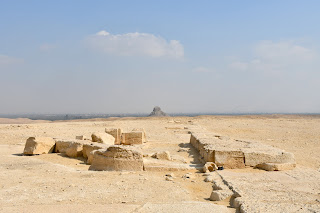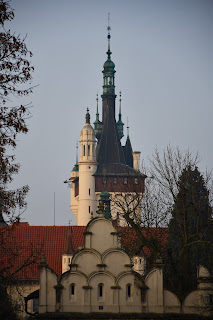An Egyptian Excursion – Day 8: Giza
On my last full day in Egypt, I went on a guided tour of Giza, Saqqara, Dahshur, and Memphis. Despite booking my tour with the same tour company that took me to Alexandria, we had a repeat of our morning mishap: the driver arrived at the wrong hotel. It occurred to me that something like this may happen, but I decided against being a patronising know-it-all and giving the tour company the same directions a second time.
Still, we
arrived by the pyramids before the morning rush. This was partly because I had
scheduled my visit for a Monday to avoid the hordes of local tourists who I
assumed descended upon the site during the weekend. Partly, however, we beat
the crowds because there was very little traffic. My guide explained that
usually there are traffic jams, but because the schools have been on vacation,
the roads were much emptier than usual. Of course, there was still a bit of a
crowd, but the few groups bore no comparison to the cataclysmic gatherings
along the Nile.
My guide
first took me to the base of the Pyramid of Khufu, after which the driver took
us to a lookout point over the three main pyramids and down to the Sphinx. This
latter structure, I learned, is actually a monolith cut from a hunk of
limestone at the site, and not an assembled structure like the pyramids. It was
likely commissioned by Khafre, who was entombed in the second largest pyramid
at the complex. Possibly out of an expectation to show filial piety, Khafre
built his pyramid shorter than that of his father Khufu. However, he built it
on a slightly elevated area so that it would still look taller. Unlike the
Pyramid of Khufu, the Pyramid of Khafre retains its peak made of granite, which
used to form the outer layer for the whole pyramid. The smallest of the three
large pyramids belongs to Pharaoh Menkaure.
From Giza,
we drove on to Saqqara, which is home to the oldest Egyptian pyramid, the Step
Pyramid of Djoser, built in the 27th century BCE. Unlike the smooth
pyramids of Giza, the pyramid of Djoser was built to have six tiers. Perhaps it
would be too teleological to say that the pharaohs had not yet worked out how
to give the pyramids smooth edges, as Djoser may well have been content with
how the building looked. It stands across a plain from a pillared entry hall and
close to the smaller, much more dilapidated Pyramid of Unas. This pyramid’s
burial chamber is accessible to tourists and is the first pyramid burial
chamber with funerary texts engraved on the walls.
We then
continued to the complex of Dahshur, which houses some of the most iconic
Egyptian pyramids outside Giza. We first stopped by the Red Pyramid. Built
using reddish limestone by the Pharaoh Sneferu, the pyramid was the first
successful attempt at constructing a smooth pyramid as opposed to the stepwise
pyramid built by Djoser. The passage to the empty tomb is accessible to
tourists, but I remain conflicted as to whether the experience was enjoyable or
not. For the first two minutes of my descent, I fought claustrophobic thoughts
about how the pyramid might cave in and crush me. As I continued downwards bending
sideways with my backpack sliding down my shoulder, I felt myself beginning to
acutely hate everyone and everything. It did not help that the inside of the
pyramid felt like a sauna and the stagnant air smelled terrible. Finally, when
I made it into the burial chambers, I found them completely empty. There was
not even writing on the walls. I did feel awed, however, by the profound
silence of the place.
Just a few
minutes beyond the Red Pyramid, we arrived at the Bent Pyramid, one of Djoser’s
earlier unsuccessful attempts at building a pyramid with smooth sides. The
sides were built too steep, so halfway through the construction process, the
angle was lowered, giving the pyramid its “bent” shape. From the Bent Pyramid,
one can also see another “failed” pyramid, the Black Pyramid of Amenemhat III.
The jagged structure is said to be the result of knowledge failing to transmit
from the Old Kingdom to the Middle Kingdom: the pyramid was only built in the
nineteenth century BCE, giving rise to speculations that the art of
pyramid-building had been lost by then. While it is true that it would have
been better not to overdo the passageways and to build the pyramid out of stone
rather than mudbrick, issues like seeping groundwater made matters much worse.
Finally, we rode over to the ruins of Memphis. Very little remains of this ancient city from the Old Kingdom period beside a few statues, the most impressive of which are now housed at the Egyptian Museum. However, the site possesses a giant fallen statue of Ramesses II, as well as one that still stands, both of which were made when the king was still alive. On our way to and from Memphis, we passed by expansive date groves and could see local life ebbing past: people riding horse-drawn carts down the roads, donkeys pulling heavy loads, and autorickshaws cruising around without paying any heed to health and safety. It was a different sight from the glorious old quarters of Cairo, with its countless ribbed domes like stone lemon presses.





















Comments
Post a Comment